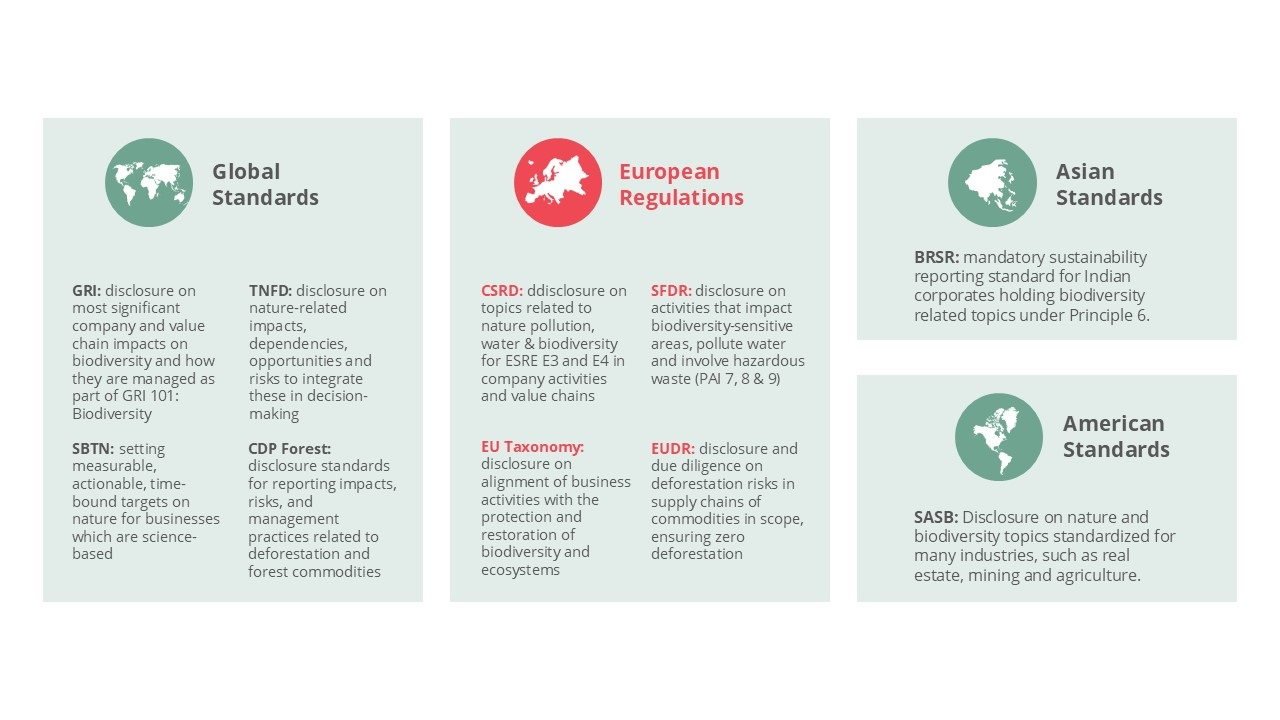The critical role of nature and biodiversity in shaping sustainable business practices
Daan Schipper, Director Northern Europe, and Alessandro Casoli, Head of Advisory and Deputy Head of UK
Nature and biodiversity have often been overlooked in the shadow of climate change-related issues, despite humanity’s indispensable reliance on the ecosystem services they provide. Anthropogenic activities have placed immense pressure on nature, with factors such as pollution, land-use changes, and global warming already pushing one-fifth of ecosystems toward collapse, resulting in extreme biodiversity loss that threatens a crisis comparable to climate change (WWF, 2024).
Why nature matters to business
Nature’s ecosystem services are vital to the functioning of the global economy. In fact, around 50% of the world’s GDP depends directly on nature (World Economic Forum, 2020). Sectors such as agriculture, food, and construction are particularly vulnerable, with many industries relying on natural resources and healthy ecosystems. Nature-related risks are becoming increasingly apparent, with disruptions to these systems potentially jeopardising business operations and supply chains. For example, industries dependent on crop production or clean water can be severely affected by ecosystem degradation or climate change.
In response, financial institutions are beginning to recognise the importance of addressing nature-related risks. Many are engaging with clients to assess the impact of biodiversity and natural capital on their portfolios. With climate change already firmly in the spotlight, nature and biodiversity are rapidly emerging as critical issues in the financial sector.
The rise of regulatory focus
Regulation is increasingly shifting towards addressing nature-related risks. The Taskforce on Nature-related Financial Disclosures (“TNFD”), a global reporting standard aiming to simplify and structure nature-based reporting for corporate and financial institutions, has seen sharp acceleration of adoption in 2024, with 57% signatory growth since January, of which 129 are financial institutions with 17.7 trillion USD in assets under management (TNFD, 2024). Another initiative, the Finance for Biodiversity pledge, launched in 2020, now has almost 200 members with over 20 trillion euros of assets under management (Finance for Biodiversity Foundation, 2024).
The European Union has already incorporated nature into its recent regulations, such as the Corporate Sustainability Reporting Directive (“CSRD”) and the EU Taxonomy. These regulatory measures follow the success of climate-related policies and aim to provide a clear path for companies to understand and report their impact on nature.
The rise of these frameworks signals a growing need for businesses to take nature-related risks seriously, not just from an environmental standpoint, but also from a financial one. Companies that fail to consider these risks may find themselves exposed to reputational damage, legal liabilities, and supply chain disruptions.

Holtara's role in navigating nature-related risks
Given the complexity and material impact of nature and biodiversity, navigating this issue requires expertise. Holtara can support businesses by conducting top-down portfolio risk assessments, deep dives into specific risk areas, and developing tailored asset strategies. Our approach aligns with the TNFD LEAP framework (Locate, Evaluate, Assess, Prepare), and assesses the double materiality of company relationships with nature – including evaluation of impacts and dependencies on nature, as well as the consequent risks and opportunities as a result. We ensure that businesses understand these dynamics and are well-equipped to manage nature-related risks effectively.
The growing need for comprehensive reporting
In recent years, the understanding and disclosure of nature and biodiversity related risks in financial and non-financial reports have lagged behind climate reporting. However, there is growing recognition of the need for comprehensive and transparent reporting. The adoption of the TNFD framework and the growing body of guidance from organisations such as the World Benchmarking Alliance will help companies develop strategies and prepare for more stringent reporting requirements in the near future. This shift reflects a broader trend in ESG, as companies and investors realise that nature and biodiversity are essential components of long-term sustainability and profitability.
Final thoughts: A shift towards sustainability
As the importance of nature and biodiversity continues to rise, companies and investors alike will need to shift their focus from traditional climate targets to a more comprehensive sustainability framework. This includes considering the direct and indirect impacts of business activities on nature, and how these impacts affect the broader economy and society. Addressing nature and biodiversity challenges will require more than just setting targets – it will require understanding and addressing the complex, spatially relevant factors that define a company’s relationship with the natural world.
The growing focus on nature and biodiversity is not just an environmental issue but a business imperative. By developing strategies, engaging with clients, and embracing regulatory frameworks, businesses can mitigate risks and seize opportunities related to nature. Holtara’s expertise in this space can help guide companies through this transition, enabling them to thrive in an increasingly nature-conscious world.
Follow us on LinkedIn





















































First, please LoginComment After ~